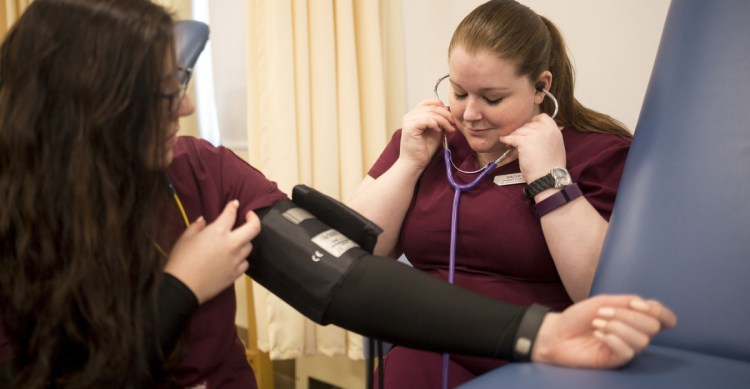There are good-paying jobs open in Maine – and the potential for more. The question is, who’s going to fill them?
From a look at the state’s demographics, it’s clear the workers must come from a number of sources. To get them the skills they need, however, Maine has to change how we think about education.
As the grim headlines generated by a 2018 Maine Department of Labor report said, the state is expected to add fewer than 100 net jobs through 2026.
But the report suggested a lot more volatility in the job market than those headlines suggest. While some sectors will lose a lot of jobs, others will expand greatly, limited only by the number and quality of workers available.
As one of only two states experiencing more deaths than births, something that will soon bring a shrinking workforce, meeting the demand for workers by successful businesses will be difficult. Not only does Maine need to retain the students who grow up here, it has to attract those from other states. It needs Mainers now in low-paying jobs to move on to better ones. It needs to be a destination for relocating workers and for remote employees who can work anywhere. It needs to help immigrants and asylum seekers succeed.
All of that takes a commitment to training and education, as well as the acknowledgement that it won’t always take place in linear fashion or within the traditional kindergarten-through-college framework. Students of all ages and backgrounds will have to be met where they are and given what they need, whether it’s a high school sophomore who shows an interest in welding or a 35-year-old mom working retail who sees a future as a registered nurse.
Unfortunately, in general, that is not how our education system is constructed. K-12 schools have been largely focused on steering kids toward college, there are few ways to engage young adults who have graduated from high school but have not sought additional schooling, and significant barriers make it too difficult for working adults – many of them parents – to return to school.
Slowly, that is changing. There has been an effort in recent years to bolster career and technical training in Maine schools, and to change the wider view of vocational education to reflect new opportunities in the field. There is growing attention – but still too little – being paid to the 14,000 or so “disengaged youth,” Mainers age 16-24 who are not in school or working.
And there has been investment, particularly in the University of Maine System, in adult education and programs for nontraditional students.
Still, there is more that can be done in making opportunities more widely known, in helping adults with financial aid and other supports such as child care and transportation, and with apprenticeships and other forms of job training.
If Mainers are given the tools to follow opportunities, there are jobs waiting for them. A new report from Educate Maine and the Maine State Chamber of Commerce shows a variety of fields that offer high-paying careers for a range of education levels. In computer science, construction, health care and manufacturing, to name a few sectors, there are good jobs waiting for Maine workers – and there will be at least for the next decade, the report says.
Making sure Mainers have the skills to fill those jobs won’t solve all the state’s workforce problems. But it will help – while giving individual Mainers a shot at a better future at the same time.
Send questions/comments to the editors.


